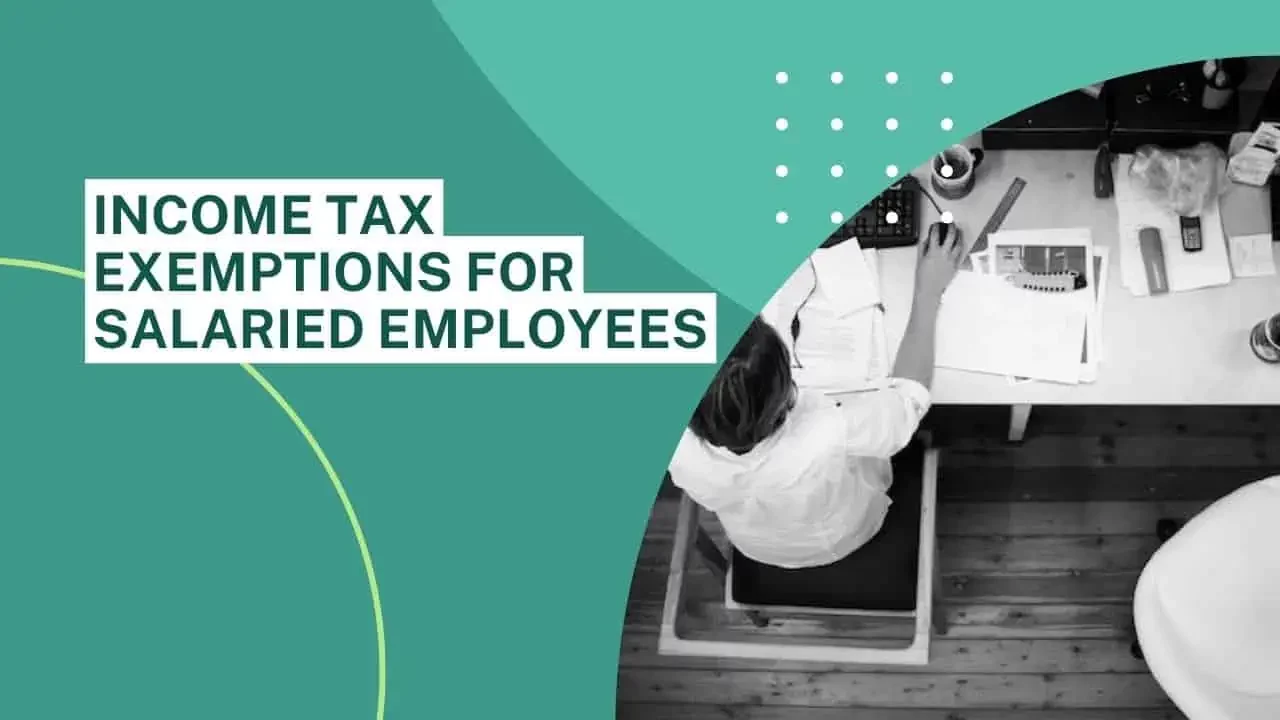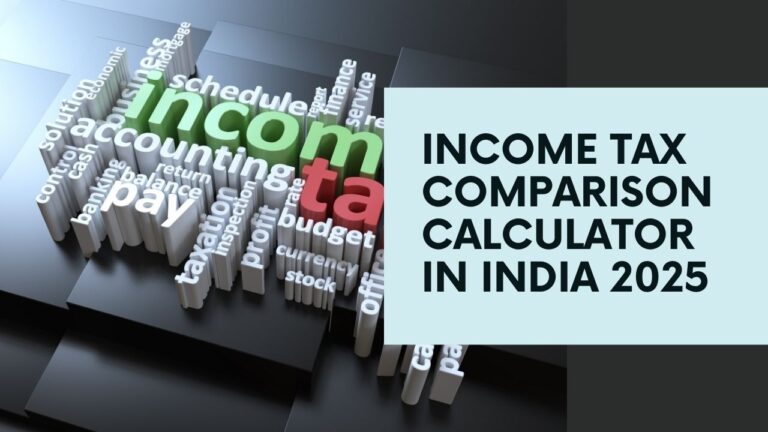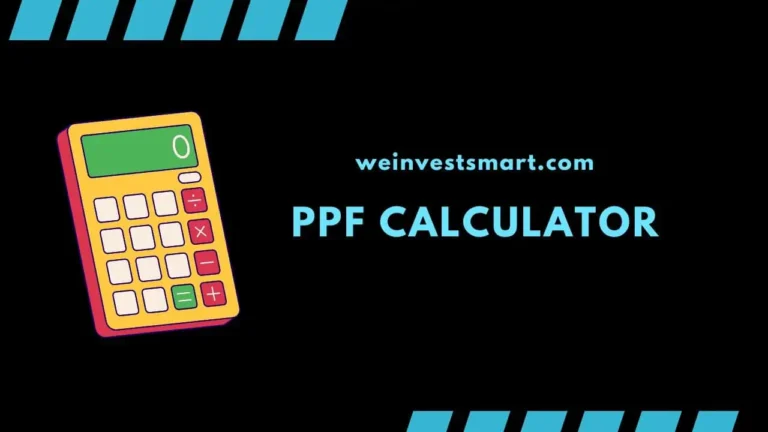Income Tax Exemptions for Salaried Employees: Full Details on Deductions, 80C, HRA, NPS, and PPF
This post was most recently updated on February 12th, 2024
Income tax is an inevitable part of every salaried employee’s financial life. However, the Indian Income Tax Act provides several exemptions and deductions that can help reduce the tax burden for salaried employees. By taking advantage of these tax benefits, salaried employees can not only save money but also invest in their financial future.

In this article, we will explore the various Income Tax Exemptions for Salaried Employees in India. From standard deductions to exemptions for medical bills and travel allowances, we will cover everything you need to know to optimize your tax savings.
Page Contents
Income Tax Exemptions for Salaried Employees
| Exemption/Deduction | Eligibility | Maximum Limit | Conditions |
|---|---|---|---|
| Standard Deduction | All salaried employees | Rs. 50,000 (FY 2020-21) | Available as a deduction from the gross salary |
| House Rent Allowance (HRA) | Salaried employees receiving HRA | Actual HRA received or 50% or 40% of salary (depending on the city of residence) or Rent paid minus 10% of salary | The employee must be paying rent for the accommodation occupied |
| Leave Travel Allowance (LTA) | All salaried employees | Actual expenses incurred on travel or LTA amount received from the employer | Travel must be within India and only for the employee and their family |
| Medical Reimbursement | All salaried employees | Rs. 15,000 per annum | Reimbursement for medical expenses incurred |
| Section 80C | All taxpayers | Rs. 1.5 Lakhs per annum | Investment in tax-saving instruments such as PPF, EPF, life insurance premiums, ELSS, etc. |
| Section 80D | All taxpayers | Rs. 25,000 per annum (Rs. 50,000 for senior citizens) | Investment in health insurance premiums |
| Section 80E | All taxpayers | No limit | Interest paid on education loan |
| Section 80GG | Salaried employees who do not receive HRA | Rs. 5,000 per month or 25% of total income or Rent paid minus 10% of total income | The employee must not own any accommodation and must file a declaration in Form No. 10BA regarding the expenditure incurred towards rent |
Note: The maximum limit and conditions are subject to change based on the latest tax laws and regulations. Please consult with a tax advisor or the relevant authorities for accurate and up-to-date information.
Consider reading: Old vs New Tax Regime Calculator
Difference between Exemption and Deduction
If an income is exempt from tax, then it is not included in the computation of income. However, the deduction is given from income chargeable to tax. Exempt income will never exceed the amount of income.
However, the deduction may be less than, equal to, or more than the amount of income.
Exemptions Available to Save Tax on Salary Income
First, let us consider the allowances that exempt you from your salary.
1. Mobile/Telephone Reimbursement
- Eligibility: Exemption for costs related to work-required mobile/telephone or internet connections.
- Requirement: Must provide bills, and only post-paid connections qualify.
2. Leave Travel Allowance (LTA)
- Claim Period: Twice in a four-year block; current block is 2022-2025.
- Flexibility: Unclaimed LTA can be carried forward to the next year.
- Tax Planning: Request your employer to defer tax deduction to the next year for LTA claims.
3. Entertainment Allowances
- Eligibility: Only for Government employees.
- Exemption Cap: The lesser of Rs 5,000, 1/5th of salary (excluding benefits/perquisites), or actual allowance received.
4. House Rent Allowance (HRA)
- Misconception Clarified: Not all rent paid is exempt.
- Exemption Calculation:
- Actual HRA received.
- 40% of salary (50% in metro cities like Mumbai, Delhi, etc.).
- Rent paid minus 10% of salary.
- Salary Components: Includes Basic + DA (if part of retirement benefits) + Turnover-based Commission.
5. Children Education Allowance
- Exemption Limit: Up to Rs.100 per month per child, for a maximum of 2 children.
- Potential Savings: Up to Rs.200 per month.
6. Hostel Expenditure Allowance
- Exemption Limit: Up to Rs. 300 per month per child, for up to 2 children.
- Maximum Savings: Up to Rs.600 per month.
7. Conveyance Allowance
- Nature: For expenses related to conveyance in performing official duties.
- Limit: No upper limit; exemption based on actual expenditure for official purposes.
8. Allowances for Travel on Tour or Transfer
- Scope: Includes any allowance for travel during tours or transfers.
- Limit: No specified limit; exemption based on actual expenditure for official purposes.
9. Daily Allowance
- Applicability: For employees working outside normal duty places.
- Exemption Basis: Based on the expenditure incurred for official purposes.
Summary: This guide covers key allowances that salaried individuals can leverage to optimize their tax savings. While some allowances like Children’s Education and Hostel Expenditure may offer modest benefits, collectively, these exemptions can significantly reduce tax liability. It’s important to understand each allowance’s criteria to maximize potential savings.
Consider reading: HRA Calculator, Exemption, Calculation And Rules
Deductions Available to Save Tax on Salary Income
Now let us consider deductions, which will save tax on salary income.
Standard Deductions
Govt has allowed Rs. 50000 standard deductions from the assessment year 2023-24(FY 22-23).
So your net income is reduced by Rs.50000 without you providing any documents. This replaced Transport Allowance and Medical Allowance which existed before.
Sec. 80C
This is the famous section that is often used by all salaried. The maximum limit for the current year is Rs.1,50,000.
Therefore, up to Rs.1,50,000, you can save tax on salary income from this section alone. The different investments you do and can also be claimed under Sec.80C are listed below
- Life Insurance premium (Paid by an individual, spouse, and child. In the case of HUF, on the life of any member of HUF).
- EPF-Employee contribution can be claimed for deduction.
- Public Provident Fund (Paid by an individual, spouse, and child. In the case of HUF, on the life of any member of HUF).
- National Savings Certificate (NSC).
- Sukanya Samriddhi Account
- ELSS or Tax Saving Mutual Funds.
- Senior Citizen Savings Scheme.
- 5-Years Post Office FD or Bank Deposits.
- The tuition fee of kids.
- Principal payment towards a home loan.
Sec. 80CCC
Contributions to certain pension plans of LIC or any other insurers. The limit is Rs.1,50,000.
Sec. 80CCD: NPS
Section 80CCD (1) – NPS Contributions
Key Provisions:
- Applicable to all Indian citizens contributing to the NPS, aged 18 to 60, including NRIs.
- Eligibility: Government employees, private employees, and self-employed individuals.
- Tax Deduction Limit: Maximum 10% of salary (basic + DA) or 10% of gross income for individuals.
- For self-employed, the limit is increased to 20% of Gross Total Income, with a cap of Rs. 1,50,000/- per financial year, effective from FY 2017-18.
Additional Benefit – Sub-section 1B:
- Introduced in the 2015 Union Budget.
- Offers an extra deduction of Rs. 50,000/-, applicable to both salaried and self-employed persons.
- Raises the maximum deduction under Section 80CCD to Rs. 2,00,000/-.
- Claimable over and above the deductions under Section 80CCD (1).
Section 80CCD (2) – Employer Contributions to NPS
Highlights:
- Targets salaried individuals only (not applicable to self-employed).
- Employers’ contributions towards NPS are over and above those to PPF and EPF.
- Deduction claim limit: Up to 10% of salary (basic pay + dearness allowance) or equal to employer’s contribution towards NPS.
- Deductions under this section are additional to those under Section 80 CCD (1).
Sec.80CCD 1(B) – Additional Rs. 50,000 Tax Benefit for NPS
- From FY 2015-16, an extra tax benefit of Rs.50,000 is available for NPS contributors.
- This benefit is exclusive and does not form part of Sec.80 CCD 1.
Sec.80D: Health Insurance Premium
You (as an individual or HUF) can claim a deduction of Rs.25,000 under section 80D on insurance for self, spouse, and dependent children.
An additional deduction for the insurance of parents is available up to Rs 25,000 if they are less than 60 years of age. If the parents are aged above 60, the deduction amount is Rs 50,000, which has been increased in Budget 2018 from Rs 30,000.
In case, both taxpayer and parent(s) are 60 years or above, the maximum deduction available under this section is up to Rs.1 lakh.
Consider reading: Best Term Insurance Plans in India
Sec.80DD: Medical Expense Tax Exemption
You can claim up to Rs.75,000 as medical expenses on treatment of your dependents (spouse, parents, kids, or siblings) who have 40% disability. If it is a severe disability, then the limit is Rs.1,25,000.
Sec.80DDB: Treatment for Critical Ailments
An individual (less than 60 years of age) can claim up to Rs 40,000 for the treatment of specified critical ailments.
You can also claim on behalf of the dependents. For senior citizens, it is Rs.60,000 and for very senior citizens (above 80 years of age) the limit is Rs.80,000.
For claiming deductions you need to obtain a doctor’s Certificate or prescription from a specialist working in a Govt or Private hospital. The following diseases are eligible for claim under this section as the deduction.
1) Neurological Diseases where the disability level has been certified to be 40% and above;
- Dementia
- Dystonia Musculorum Deformans
- Motor Neuron Disease
- Ataxia
- Chorea
- Hemiballismus
- Aphasia
- Parkinson’s Disease
2) Malignant Cancers
3) Full Blown Acquired Immuno-Deficiency Syndrome (AIDS) ;
4) Chronic Renal failure
5) Hematological disorders) Hemophilia
- Hemophilia
- Thalassaemia
Sec.80E: Education Loan
An educational loan taken on self, spouse, children, or for the student of whom you are legal guardian can be claimed under this section for the deduction. Only interest paid can be claimed but there is no benefit on the principal payout.
If you took a loan from financial institutions or approved charitable trusts for pursuing higher education, then only you can claim the deduction.
A loan taken from relatives or friends will not be eligible for the claim. However, education may be in India or abroad.
Consider reading: New Vs Old Tax Regime: Which one is better?
Sec.24 (B): Interest on Home Loan
The interest part of your home loan EMI will be claimed under this section. The maximum limit for the self-occupied property is Rs.2,00,000 per year.
For let-out property, the entire interest payment of the home loan can be claimed for deduction.
Sec.80EE: Interest on Home Loan
Earlier any interest payment towards home loans will be available for tax benefit under Sec.24 of the IT Act up to Rs.2,00,000 in a financial year.
Now, this is raised to another Rs.50,000. However, this additional Rs.50,000 tax benefit on the interest of home loans will be available for the below categories of loans.
- This deduction would be allowed only if the value of the property purchased is less than Rs. 50 Lakhs and the value of the loan taken is less than Rs. 35 Lakhs.
- The benefit of this deduction would be available up to the time the repayment of the loan continues.
- This Deduction would be available from Financial Year 2016-17 onwards.
Sec.80G: Donations
Donations to certain approved funds, trusts, charitable institutions/donations for renovation or repairs of notified temples, etc will form part of this deduction. You have to pay either through cheque or DD if your contribution is more than Rs.10,000.
Sec.80GG: HRA not in Salary Structure
Here are the key points related to the section that is only applicable to individuals or HUFs who do not receive HRA:
- This section is only applicable to individuals or HUFs who do not receive House Rent Allowance (HRA).
- The taxpayer may be either salaried or self-employed, but should not be receiving HRA.
- The taxpayer himself or his spouse/minor child/HUF of which he is a member should not own any accommodation at the place where he is doing a job or business.
- If the taxpayer owns a house at a place other than the place noted above, then he cannot claim the concession in respect of self-occupied property under Section 23 (2) (a) or 23 (4) (a).
- The taxpayer has to file a declaration in Form No.10BA regarding the expenditure incurred by him towards the payment of rent.
- If the above five conditions are satisfied, the amount deductible under Section 80GG is the least of the following:
- Rs. 5,000 per month (earlier it was Rs.2,000 per month, but it was raised to Rs.5,000 per month from the Budget 2016).
- 25% of the total income of the taxpayer for the year.
- Rent paid less than 10% of total income (Rent Paid-10% of Total Income).
Sec.87A: Rebate for Income Under 5 Lakhs
You can claim a tax rebate under this provision if you meet the following conditions:
- You must be a RESIDENT INDIVIDUAL; and
- Your Total Income after Deductions (under Section 80) doesn’t exceed Rs 5 lakh.
- The rebate is limited to Rs 12,500. This means that if the total tax payable is lower than Rs 12,500, then that amount will be the rebate under section 87A. This rebate is applied to the total tax before adding the Education Cess (4%).
Following are a few examples of the 87A rebate allowed to Resident Individuals including Senior Citizens:
| Total Income | Tax payable before cess | Rebate u/s 87A | Tax Payable + 4% Cess |
|---|---|---|---|
2,70,000 | 1,000 | 1,000 | 0 |
3,60,000 | 3,000 | 3,000 | 0 |
4,90,000 | 12,000 | 12,000 | 0 |
Sec.80TTA: Interest on the Savings Bank Account
You can claim a deduction of up to Rs.10,000 on interest earned from your savings bank, post office, or cooperative society.
However, please note that such a deduction is not available for interest earned on your FDs. This is only for interest earned from the SAVINGS account.
Consider reading: Tax Loss Harvesting and How to Benefit
Final Thoughts on Income Tax Exemptions for Salaried Employees
Being a salaried employee, it’s most important that you save as much tax as possible to support your financial planning.
But while you are planning to save tax, please make sure you understand the tax savings instrument you are planning to use, which will not only help you save tax but also help create wealth in the long term.
We have seen people invest in instruments without realizing their pros and cons and later realize that the tax saving option was not good.
FAQ on Income Tax Exemptions for Salaried Employees
What is the tax exemption for salaried employees?
Salaried employees can avail a standard tax exemption of Rs. 50,000 in the old tax regime in the financial year 2022-23. Starting from 2023-24, the new regime also offers the same standard deduction to salaried individuals, aiding in tax savings and simplifying the tax filing process.
What is exempt from income from salary?
Income exempt from salary includes House Rent Allowance (HRA), Leave Travel Allowance (LTA), and Encashment of Leave. It’s important for salaried individuals to report these exemptions when filing tax returns to ensure compliance and accurate taxable income calculation.
How much salary is exempted from ITR?
For the Financial Year 2023-24, salaries up to ₹2.5 lakh are exempt from Income Tax Return (ITR) filing for individuals, HUFs, persons under 60 years, and NRIs in India. This includes a 4% health and education cess on the payable tax. Always check for the latest tax slabs as they can change annually.





